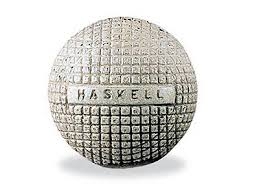It’s been a hot topic in recent years, whether or not PGA Tour players hit the golf ball too far. The subject has been discussed by just about all the Pros, many tournament venue hosts, and even championship sponsors who help bankroll these multi-million dollar events. All, weighing in with their opinions, that span the game, positive and negative.
Among them, Tiger Woods, Brad Faxon, Brandel Chamblee, Mike Davis, and Wally Uihlein have conceded their views.
HOW FAR IS TOO FAR?
Firstly, exactly how much distance by the golf ball is too much distance? Where does the judgment of ‘too far’ actually come from? Does going ‘too far’ on the course weaken the contest of the sport? Does it lessen the viewing pleasure of the millions of golf fans who tune in to watch or faithfully attend the tournaments? At what point, exactly, is it determined that the technology used in the development of new golf balls have impacted the true veracity of the game?
Time and progress tend to go hand-in-hand. For instance, just 50 years ago, it would take a handwritten, stamped letter, that was dropped into a post office in New York City, 5-6 days to arrive in Los Angeles, Calif. Today, we send letters, through electronic means, that reach their destination in an instant, at the stroke of a key.
A NEW GAME CHANGER
Earlier in his professional career, Harry Vardon, a professional golfer from the Bailiwick of Jersey, won The Open Championship a record six times and also won the 1900 U.S. Open. He—and many other competitorss— played solely with “The Vardon Flyer,” the gutta percha golf ball that bared his name. The ball was invented in 1848 and was widely used by professional golfers until the early 1900’s when a different ball came into the forefront.
This new, revolutionary golf ball that took the industry by storm was the Haskell Rubber ball. Avid golfer Coburn Haskell and an employee of the B.F. Goodrich Company in Akron, Ohio, Betrum Work invented it together. In making its debut as the first-ever rubber golf ball, it changed the game forever.
The Haskell Rubber ball enhanced shot performance and increased distance. Yet, switching to the new ball took was not immediately accepted by top players, and even Harry Vardon took almost 10 years to make the switch. Perhaps, in those days, players and industry professionals were having the same discussions back then that we are having today.
Patterns of how technology is continuing to change the way sports is played can be seen everywhere. And, throughout golf history, the golf ball has always come out on top.
WHAT’S THE BIG DEAL?
So why now is it such a big deal the golf ball is going too far? If you compare the scoring average of those on the PGA Tour to the driving distance and length of the golf course, the data is difficult to accurately assess before 1980.
From 1980 to present time, the PGA Tour tracked this information. If you take a look at the past 37 years here is what you’ll discover. Since 1980, the median scoring average on the PGA Tour has gone from 72.3 to 70.995 in 2016. That is a change of a change of 1.8 percent over 37 years or put it this way, a difference of 1.305 shots. The lowest scoring average on the PGA Tour has gone from 69.73 to 69.17. That is a difference of 0.56 strokes or an 0.8 percent of change. Indeed, this shows that scoring average has gotten better. But is this increase in scoring averages a direct result of further travel by the golf ball?
Taking a look at the driving distances, the median driving distance on the PGA Tour in 1980, was 256.7 yards. This rose to 290.1 yards in 2016. With is and advancement of 33.4 yards over 37 years, or about 1 yard per year. Percentage-wise, the change is a difference of 13 percent.
In 1980, the average was 274.3 yards for the longest ball striker. In 2016, the longest hitter averaged 314.5 yards, an improvement of 40.2 yards. That’s a percentage change of 14.6 percent. Yes, the ball was soaring a whole lot farther in 2016 versus 1980, as PGA Tour players played, however, the scoring averages haven’t changed that much. Perhaps this is due to the fact that the length of golf courses has also increased?
Well, for now, the discussion continues, because, as we all can see, golf ball technology is on a roll that aims at only gaining further distance for players.




